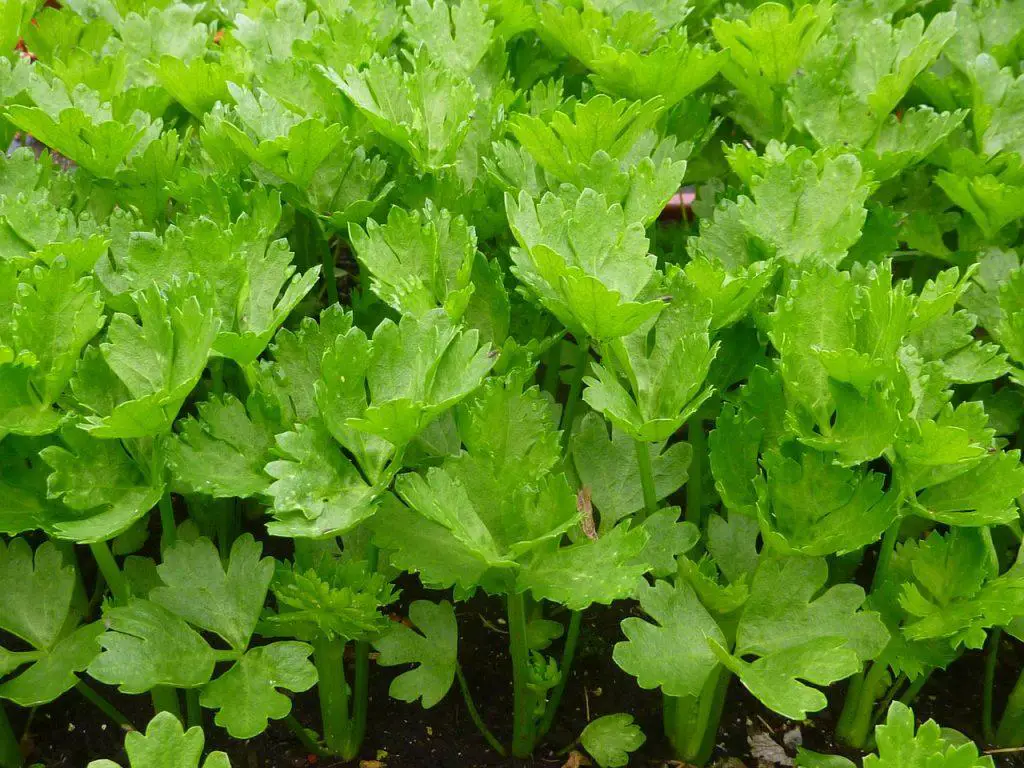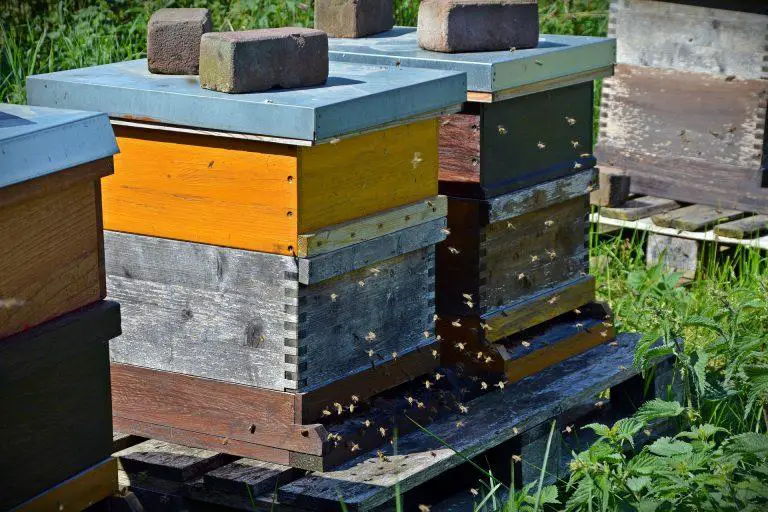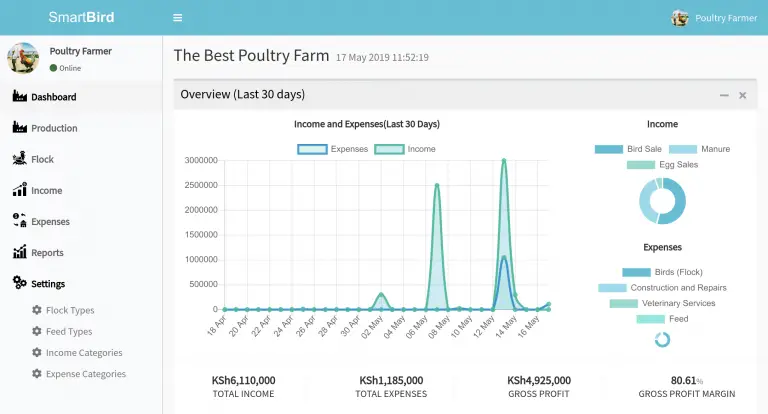Celery Farming in Kenya – A detailed Guide
Celery is a biennial plant that is farmed as an annual plant. Grown for its stalks, leaves, and seeds, the demand for celery in Kenya is increasing as more people become health conscious.
It is rich in Folic Acid, Vitamin B6, Vitamin K, Vitamin C, and Potassium.
As a versatile plant, celery can be grown in farms, home gardens, and even in containers.
Health Benefits of Celery
Celery is a sweet mild-green vegetable packed with nutrients and flavor especially when you cook it in soups. Celery is packed with Vitamins K and A and also contains traces of minerals such as calcium manganese and phosphorus. Being a vegetable, it also contains fiber which is essential in preventing constipation to avoid the horrific toilet dances we have all battled with at some point. Some of the other health benefits of celery include;
- Celery contains Pectin-based polysaccharides that play an essential role in reducing instances of stomach ulcers and improve stomach lining. Given celery is 95% water and contains dietary fiber, it is essential to support a healthy digestive tract.
- Celery is also essential especially for people suffering from arthritis. You can consume celery for its anti-inflammatory properties just as you’d take drugs like ibuprofen. In addition to that, celery has also been found effective in treating neurodegenerative diseases such as Alzheimer’s and multiple sclerosis which are common in the older generation.
- Being rich in antioxidants, celery also has anticancer compounds that target free radicals and eliminate cancer cells. Studies have shown that consuming two stalks celery reduces your risk of lung cancer by up to 60%
The Market for Celery
The celery market currently growing given people are more informed and are mindful of their diet. You can also farm your celery for its seeds for the extraction of essential oils for use mainly in the medical field. Fresh celery is currently retailing at Ksh.150 (1.5 USD) per kg in wholesale markets and about Ksh.200 (2 USD) per kg in the retail Kenyan market. Some of the major buyers of celery in Kenya include;
- Diet and lifestyle bars.
- Juicing Bars.
- Green groceries in towns and estates.
- Vegetarian restaurants.
- Export market.
Varieties of Celery
There are three major types of celery. These varieties are differentiated based on the part intended to be utilized for use. In the broad category, there are two varieties; Leaf celery and stalk celery. The third variety is utilized for its roots. These varieties include;
- Celeriac otherwise ‘root celery’ is utilized for its roots. It is characterized by the development of enlarged root tissues. You can use this as an ingredient in cooked stews, salads, or a soup additive.
- Leaf celery is also referred to as ‘self-blanching’ or yellow celery. Its plants have leafy, slender, hollow petioles. It has a thinner stalk than Pascal (details below) and you can grow this variety for its aromatic leaves and seeds. You can use its leaves for medicinal purposes or as a condiment garnish.
- The third and most common type is the stalk celery or Pascal. It takes 105-130 days to mature. It is consumed for its stalk and is eaten raw or in salads.
In Kenya, the most common varieties are Pascal and tall Utah which are both utilized for its stalks. The seeds are found at Kenya seed outlets.

Ecological Requirements for Celery farming
It is important to consider your farm properties before delving into celery farming. For the ideal growth of celery, certain ecological conditions have to be ideal. Some of the requirements include;
- Celery does well in slightly acidic soil of 6.0-6.8pH. Sandy to heavier loam soils rich in organic content is the most suitable for the production of celery. The soils should also be deep and well-drained.
- Temperatures of about 15-250C is the most ideal for celery growth. Extended periods of cold temperatures below 130C will cause plant bolting. High temperatures of above 240C will result in the stalks becoming more fibrous and have a bitter taste.
- An area that receives rainfall of about 1000mm average is the most ideal for the growth of celery. Each plant requires about 750mm of water from sowing to harvesting.
Yield Per Acre for Celery
The yield of many celery crops are dependent on various factors including;
- Soil type or fertility.
- Climatic conditions you grow your crop in.
- Variety of celery you choose to farm.
- Planting area whether indoors or in the field.
- Your management practices such as weeding and irrigation.
Under ideal conditions, you can harvest between 25-30tonnes per hectare.
Yields for the seeds also vary. An ideal farm can yield up to 500kgs of seeds for every hectare of celery.
Land Preparation for Planting Celery
When preparing land before you transplant your celery seedlings, you should take the following practices into consideration.
- You should select a site that receives direct sunlight.
- You should loosen the soil to a depth of about 30cm with a hoe.
- Since celery is a heavy feeder, it is also recommended that you mix well-rotted animal manure or compost to a depth of about 5cm. Make sure the soil is moist but not flooded.
Ensure the soil is well pulverized to encourage draining. Any stagnant water in the field will encourage the spread of fungal diseases which will lead to unnecessary losses.
Fertilizer Requirements for Celery
Celery does well best in slightly acid soil (6.0-6.8pH). It is very important that you carry out a soil test analysis to know which nutrients your soil is deficient in for the growth of celery.
Celery has a high nitrogen requirement. The first application of nitrogen should be done at the time of planting time to boost root formation. About one month after transplanting, top dress with nitrogen fertilizer in the field and the remaining side is top dressed in the third month.
Care should be taken when applying the nitrogen fertilizer so as not to exceed the required limit. Blackheart conditions can be accelerated by high nitrogen levels in the soil.
You should use calcium nitrate fertilizer. This will improve calcium levels in the soil to deter the occurrence of blackheart. Also, a deficiency of micronutrients in boron, salt, and manganese will lead to the plant facing physiological disorders. That is why I still insist that you do a proper soil test to know the exact fertilizer that best suits your farm.
Celery responds well to compost manures. Compost in the root zone area of plants improves aeration and also the water-holding capacity of the soil. If you have pigs manure, it will be more beneficial as aside from increasing the organic content in your farm, it serves to ward off any rodents.
Nursery Preparation and Transplanting for Planting Celery
- When preparing your nursery seedbed, mix the soil with compost manure rich in nitrogen. You should then raise beds of 8*1.25metres with a good width that will be easy to work with. Target a seed rate of about 450 grams per hectare you intend to farm. You should then sow the seeds and lightly cover them. They will start germinating between 4-8weeks. You can soak the seeds in the water a day before sowing to hasten the germination process.
- Celery seeds can also be directly sown into the field as long as you have a good irrigation system to ensure that the crop never goes without water.
- If you choose to use the seedbed method, your seedlings will be ready for transplanting after about 2 months after sowing. Plant your seedling in the field with a spacing of 60*15cm or 45*15cm. Do not plant the seedlings too deep. Keep the roots of the plant to a depth of not more than 2cm.
- Before planting, you should incorporate organic compost into the field. Do this at the rate of 15 wheelbarrows per every acre. Ensure that you water thoroughly after planting.
Irrigation Requirements for Celery
Irrigation is key in all stages of the growth of the celery crop. During the preparation of the seedbed, you should ensure that the soil contains as much moisture as possible. You should also sprinkle some water lightly immediately after sowing. The surface should never become dry nor too wet (to allow for air circulation) until the seedlings appear.
Before transplanting, you should ensure the farm is adequately moist to ensure the transplanted seedlings do not suffer from water stress. Because its roots are shallow, you will be required to irrigate small amounts of water frequently.
As you approach the last month to harvest, more moisture will be required as rapid growth occurs at this stage. About 750 mm of water is required to grow the crop from seed to maturity.
Blanching Celery
This is the process where sunlight is blocked off from the developing petioles thereby inhibiting chlorophyll formation in the stalk. The pale celery stalks tend to be more tender and have a better taste than the green petioles which have a bitter taste. This blanching is not to be confused with the cooking blanching
Blanching is done once the plant gets to about 25cm. The crops are covered using boards, mulch, or soil moulds and left to mature without the greening of the stalk. This process is only done to the stalk celery to improve its taste especially if you intend to eat your celery raw.
Some celery varieties are self blanching. Choosing these varieties and planting them in the recommended spacing for self blanching celery will do its own blanching and you will not need to cover the stalks when the time for blanching comes.
Pests affecting Celery
As celery is a vegetative plant, it is important to conduct pest control periodically to avoid infestation. This is key in ensuring you have produced of good quality especially if you are targeting the export market. Some of the pests that attack celery crop include;
- Tarnished Plant Bug
This pest is often the cause of a complete crop loss if unchecked. They appear as green to dark brown with yellowish insects or reddish-brown with black
spots. This pest feeds on the stalks causing breakdown resembling black heart.
To control this pest, spray appropriate pesticides and clear weeds adjacent to the crop. Also, do not leave any plant debris after harvesting the celery as it may harbor the insect to the next planting season.
- Aster (Six-spotted) Leafhopper
These are small, slender insects that are greenish-yellow in color. They may occur in large numbers throughout the growing season. Leafhoppers act as vectors in the transmission of the aster yellows disease (microplasma). This disease causes the plant to dwarf and turns yellow.
To control this pest, you should apply pesticides in a 10-day interval. You should also control leafhoppers on adjacent carrots and lettuce which are also hosts to this pest.
- Aphids.
Aphids are small insects found in large colonies on the undersurface of leaves. A colony of aphids consists of winged and wingless adults and nymphs.
Aphids feed by sucking plant sap. A large infestation of aphids discolors the plant foliage and curls the leaves. Also, the infestation can also be seen by the presence of honeydew, which is a sticky substance excreted by the aphids on the plant.
To control aphids, you should apply recommended pesticides or intercrop with marigold which is known to be a pest retardant.
- The Celery caterpillar
The celery caterpillar is the most harmful of all pests, supposedly an infestation is to occur. It feeds upon the leaves due to its size and yellow color with black transverse bands, it is readily seen against the background of green leaves and stalks. To control this pest, regularly spray pesticides on your crops. It is essential that you control this pest before it increases in population.
Diseases affecting Celery
Diseases lead to a reduction in the yield and quality of your produce. It is essential to control diseases early before it affects the entire crop to avert losses. Some of the diseases that attack celery crop include;
- Damping-Off
. This disease is mainly caused by Rhizoctonia solani and Pythium spp. You will notice symptoms such as the early collapse of young seedlings and rotten seeds which decreases seed germination rate or slow germination rate. This disease is however easy to control by growing your celery in sterilized soil or you might as well treat your seeds with fungicide. Also, use recommended spacing intervals to prevent easy spread.
- Leaf Blight
This disease is commonly caused by either one of two fungi called Cercospora or
Septoria. It is usually spread by wind, water, and workers or machinery in the field. This disease is characterized by yellow spots on both sides of the leaves which enlarge speedily and change to become ash gray.
To control leaf blight, you should grow seedlings in sterilized soil using fungicide treated seeds.
- Pink Rot
Pink rot is a fungal disease caused by fungi called Sclerotinia. It is characterized by the pinkish rot of crown and plants wilting and collapsing in the field. In wet conditions, decayed areas may be covered by a white mold that develops hard fungal structures that appear as black pea-sized.
To control this disease, you should practice crop rotation avoiding crops in the same family as celery. You can also spray fungicides to control the disease before it spreads to the entire crop.
- Fusarium yellows
This is a fungal disease caused by Fusarium oxysporum. The fungus infects the crop through the root system. It is characterized by a brown discoloration that occurs in the plants’ vascular system. Also, the outer leaves change color to yellow and spread to other leaves through the vascular system. The disease spreads mainly by contaminated agricultural equipment.
To control this disease, you should use resistant or tolerant varieties and practice crop rotation. When practicing crop rotation, you should avoid crops like carrots and cabbages that harbor the same diseases with celery. You can also spray a copper-based fungicide to control the disease.
Weed Control in Celery Farming
Weed control in celery farming is very essential. This is because celery is a heavy feeder of nutrients and it will not do well if there is competition for the nutrients. You can control weeds in your celery farm in three main ways;
- You can spray a pre-emergent herbicide spectrum to control the weeds before they germinate. You can do this one week before transplanting Weeds should be controlled before planting. You can use a pre-emergent herbicide to control weeds on your farm. If you have already planted your celery and weeds have also grown alongside it, then you should use a broadleaf spectrum herbicide to control the weeds.
- You can apply this herbicide 8 to 10 days after planting to tame any germinating weeds.
- Manual weed pulling and by use of a hoe (jembe) is also a good way to control weeds. However, you should take care not to damage the roots of your crop as celery roots are normally shallow.
Intercropping Celery
Vegetative crops are usually susceptible to weeds. To help mitigate the growth of weeds, intercropping is usually the go-to method for a lot of farmers. Advantages of intercropping celery include; less use of pesticides and herbicides making your farming more sustainable and better utilization of the soil resource.
Celery can be intercropped with both food crops and ornamental crops depending on your objective. You can intercrop your celery with cauliflower or cherry tomatoes to better utilize the soil resource. You should ensure to use adequate manure to prevent nutrient competition.
You can also intercrop your celery with French marigold to ward off pests that attack vegetative crops.
Harvesting Celery
Celery can be harvested when it achieves a marketable size. This will be about 4-5months after sowing. Younger celery can be harvested if the price is high in the market. If you intend to harvest the seeds, then you should wait until the seeds turn light brown in colour. You should harvest your seeds immediately to avoid seed loss.
To harvest, cut the stalks just above the ground with a sharp blade. You should trim the outer leaves off and pack in wooden or plastic crates. Machine harvesting is used in large scale production.
Post-harvest handling for Celery
Celery can be stored 1-2 months and remain fresh if you follow the recommended procedures. You should;
- Store the celery under refrigeration (1-20C) since they are highly perishable. If you store your celery in warm and wet conditions, it is sure to decay leading to losses.
- Also, you should store your produce in a room free from strong odors since the plant absorbs foreign odors. This is why it is also important to avoid perfume if you intend to handle the celery in storage.
- Ensure that you package your produce well in perforated plastic to protect your produce from wilting and losing value and flavor.




![Watermelon Farming in Kenya Guide [updated for 2023]](https://cdn-0.value.co.ke/wp-content/uploads/2019/03/watermelon-kenya-768x430.jpg)

![Vaccination schedule for Kienyeji chicken for 2023 [Download]](https://cdn-0.value.co.ke/wp-content/uploads/2018/10/kienyeji_chicken-768x536.jpg)

Hope you are well ,Can I get a spraying schedule for celery .